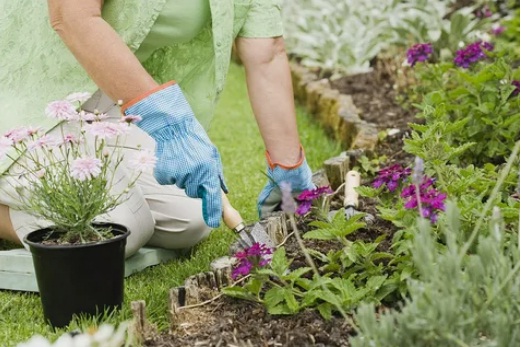Gardening is a timeless pursuit, connecting us to the natural world and providing a sense of accomplishment as we nurture plants from seed to harvest. One key aspect of successful gardening is knowing what to plant and when. Seasonal gardening tips can help you make the most of each season, maximizing your garden’s potential and ensuring a bountiful harvest.

Spring Gardening Tips
Spring is a time of renewal, making it the perfect time to start your garden. The soil is warming up, and plants are beginning to emerge from their winter dormancy. Here are some tips for spring gardening success:
- Start seeds indoors: Many plants, such as tomatoes, peppers, and eggplants, benefit from an early start indoors. Start seeds in pots or trays, and transplant them into the garden once the weather warms up.
- Prepare your soil: Spring is the ideal time to amend your soil with compost or other organic matter. This will improve soil structure and fertility, providing a healthy environment for your plants to thrive.
- Plant cool-season crops: Vegetables like lettuce, spinach, peas, and radishes thrive in the cool temperatures of spring. Plant them early in the season for a delicious harvest.
- Protect against late frosts: Keep an eye on the weather forecast and be prepared to protect tender plants from late frosts. Covering plants with row covers or cloches can provide protection against cold temperatures.
Summer Gardening Tips
Summer is the peak of the gardening season, with warm temperatures and long days providing ideal growing conditions for a wide range of plants. Here are some tips for successful summer gardening:
- Water regularly: With the hot summer sun beating down, plants will need regular watering to thrive. Water deeply and mulch around plants to retain moisture.
- Harvest frequently: Many vegetables, such as tomatoes, cucumbers, and beans, will produce more if you harvest them regularly. Check your garden daily for ripe produce.
- Control pests: Summer is also the time when pests are most active. Keep an eye out for signs of pest damage and take action to control them, whether through handpicking, spraying with insecticidal soap, or using other methods.
- Provide shade: Some plants, especially leafy greens, can benefit from a little shade during the hottest part of the day. Use shade cloth or plant taller plants to provide relief from the sun.
Fall Gardening Tips
Fall is a time of transition in the garden, as the days grow shorter and temperatures begin to cool. However, there is still plenty you can do to extend your growing season and prepare for next year. Here are some fall gardening tips:
- Plant fall crops: Many vegetables, such as carrots, beets, and kale, actually prefer the cooler temperatures of fall. Plant them in late summer for a fall harvest.
- Extend the season: You can extend your growing season even further by using row covers, cold frames, or hoop houses to protect plants from frost.
- Clean up: As plants finish producing, be sure to clean up the garden beds, removing any dead or diseased plants. This will help prevent pests and diseases from overwintering in the garden.
- Plant bulbs: Fall is the time to plant spring-flowering bulbs, such as tulips, daffodils, and crocuses. Plant them in the fall for a beautiful display of flowers in the spring.
Winter Gardening Tips
While winter may seem like a dormant time in the garden, there are still things you can do to prepare for the next growing season. Here are some winter gardening tips:
- Plan your garden: Use the winter months to plan your garden for the next year. Consider crop rotations, companion planting, and new varieties to try.
- Start seeds indoors: Some plants, such as onions and leeks, benefit from an early start indoors. Start seeds in late winter for transplanting outdoors in the spring.
- Protect your garden tools: Winter can be hard on garden tools. Clean and sharpen your tools before storing them for the winter to keep them in good condition.
- Feed the birds: Winter can be a tough time for birds, so consider putting out bird feeders to provide them with food and water.
In conclusion, seasonal gardening tips can help you make the most of each season in your garden. By knowing what to plant and when, you can ensure a successful and bountiful harvest year-round. So get out there and start gardening!



